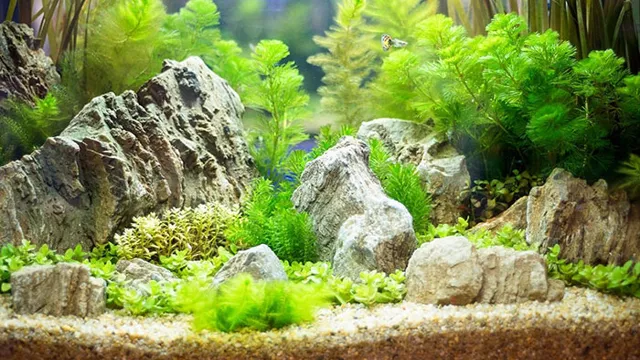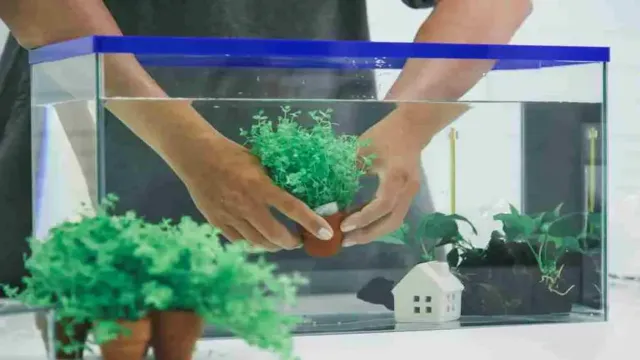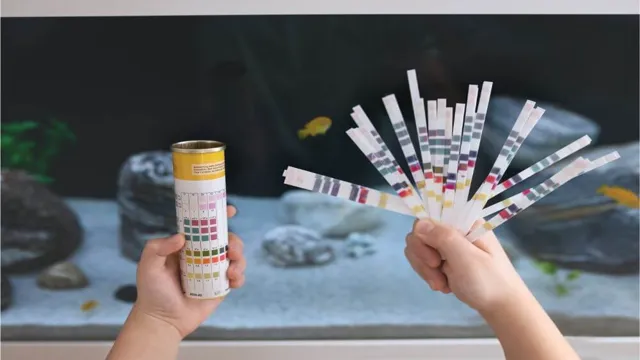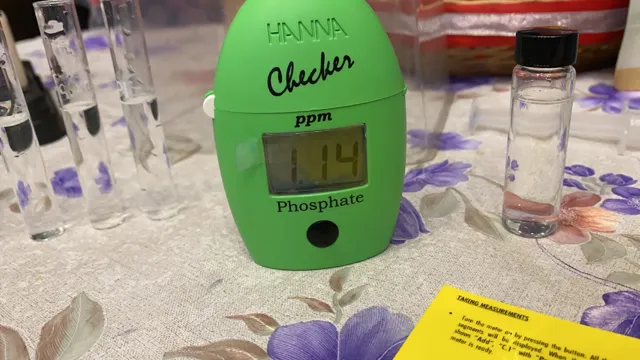As fish enthusiasts, we all know the importance of providing our aquatic pets with a safe and healthy living environment. But sometimes even the simplest of decorations or additions can be harmful to the delicate ecosystem of our aquariums. So, how can we make sure that anything we add to our aquariums is safe for our fish to thrive in? Well, the answer lies in understanding what makes something aquarium safe.
In this blog, we will explore some tips and tricks that will help you ensure the safety of any new additions to your aquarium and keep your fish healthy and happy. So, let’s dive in and discover how to make something aquarium safe!
Understanding Aquarium Safety
Aquarium safety is of utmost importance, whether you are a beginner or a seasoned enthusiast. One way of ensuring safety is by making sure that everything you put into your aquarium is aquarium safe. How do you do this? Firstly, pay attention to the materials used in the items you want to incorporate into your aquarium.
Certain materials like copper, lead, or zinc can be toxic to fish and invertebrates. Secondly, always research the particular product before adding it to the tank. Read forums, reviews, and ask other aquarium owners if they have had any issues with it.
When adding decorations or substrates, clean them thoroughly and let them soak in water for a few days before placing them in the tank. This will help to eliminate any bacteria or chemicals that might be harmful to the aquatic life. By taking these simple precautions, you can ensure a healthy and safe environment for your aquarium inhabitants, giving you peace of mind knowing that you have done everything possible to keep them safe.
The Importance of Aquarium Safety
Aquariums can be a beautiful addition to any home or office, but they also require proper safety measures to ensure the well-being of the aquatic life and the people around them. Understanding aquarium safety is crucial to prevent accidents and maintain a healthy environment for the fish, plants, and other organisms living in the tank. This includes choosing the right size of the tank for the type and number of aquatic creatures, selecting appropriate lighting and filtration systems, and regularly performing water quality tests.
It’s also essential to ensure that all electrical components, such as heaters and pumps, are properly installed and grounded to reduce the risk of electrocution. Educating children and pets about proper behavior around the aquarium is another critical aspect of its safety. With these precautions in place, your aquarium can provide a tranquil and fascinating display of marine life for years to come.

What Makes Something Unsuitable for Aquariums?
Aquarium Safety One of the critical things to understand about aquariums is what makes something unsuitable for them. Safety should always be a top priority for any aquarium owner. Certain materials or substances can be toxic to fish or harm the aquarium’s delicate ecosystem.
For instance, copper, lead, and zinc are toxic to fish, snails, and live plants. Similarly, some cleaning chemicals, lotions, or perfumes can also be dangerous for aquarium inhabitants. Always double-check the ingredients of any products before introducing them to your aquarium.
Additionally, be cautious about the type of decorations you add to your aquarium. While some may appear harmless, they can soon become problematic if they start to corrode or degrade in the water. When it comes to aquarium safety, it’s better to be safe than sorry.
Always do your research and use caution with any new additions to your aquarium.
Materials Safe for Aquariums
Making something aquarium safe can be a daunting task, but it is essential for the health of your aquatic pets. When it comes to choosing materials for your aquarium, there are several options that are safe and won’t harm your fish or other inhabitants. Glass and acrylic are popular choices for aquariums as they are both waterproof and non-toxic.
Additionally, silicone is often used to create a watertight seal, but it is important to use a brand that is specifically designed for aquarium use, as other types of silicone can contain additives that are harmful to fish. When it comes to decorations, natural materials like driftwood, live plants, and rocks that are not coated in any substances are generally safe. However, it is important to avoid using materials that can leach harmful chemicals into the water, such as treated wood, painted decorations, or copper-based items. (See Also: Is Modern Aquarium Legit? Everything You Need to Know Before Buying!)
By choosing the right materials for your aquarium, you can create a safe and healthy environment for your aquatic pets.
Glass
When it comes to choosing a safe material for aquariums, glass is a popular choice among aquatic hobbyists. Glass is non-porous, which means it won’t release any harmful substances into the water, making it safe for your fish and other aquatic life. Additionally, glass is highly durable and resistant to scratches, making it a great choice for long-term use.
Although glass can be prone to cracking or shattering if mishandled, it’s generally a sturdy material that can withstand the pressure of water and the weight of decorations and equipment. Overall, if you’re looking for a reliable and safe material for your aquarium, glass is definitely worth considering.
Plastic
When it comes to materials safe for aquariums, plastic is a common choice among aquarium owners. But not all plastics are created equal. It’s important to choose a plastic that is non-toxic and won’t leach harmful chemicals into the water.
One type of plastic that is commonly used and safe for aquariums is high-density polyethylene (HDPE). This type of plastic is durable, resistant to chemicals, and won’t break down over time. It’s also non-toxic and won’t release harmful substances into the water.
Another safe option is food-grade polypropylene, which is used in food packaging and utensils. This type of plastic is also non-toxic and won’t leach harmful chemicals into the water. When choosing plastic for your aquarium, always look for materials that are specifically labeled as safe for aquatic use.
Avoid using any plastic that isn’t specifically designed for aquariums, as it could potentially harm your aquatic pets. Overall, using safe plastics in your aquarium can help ensure the health of your fish and aquatic plants.
Ceramic
Ceramic When it comes to aquariums, choosing the right materials is crucial for the health and safety of your aquatic pets. Ceramic is a popular option for aquarium decorations and filters due to its non-toxic and inert properties. It won’t release harmful chemicals or alter the pH levels of your tank, which can have detrimental effects on aquatic life.
Plus, ceramic is durable and resistant to wear and tear, making it a long-lasting addition to your aquarium. When selecting ceramic pieces for your tank, make sure they are specifically designed for aquatic use to ensure they are free from any glazes or coatings that may be harmful to your fish and plants. With its safety and durability, ceramic is a great choice for enhancing the aesthetics and functionality of your aquarium.
Stainless Steel
Stainless steel is a popular material used in aquariums as it is rust-resistant and does not easily corrode, making it safe for marine life. It is also easy to clean and maintain, making it ideal for aquariums that require frequent cleaning. However, it is important to note that not all stainless steel is safe for aquariums, as some grades contain high levels of nickel and other metals that can be toxic to fish and other aquatic creatures.
Therefore, it is essential to choose high-quality stainless steel with low levels of nickel and other harmful metals. Always read product specifications and consult with a professional before choosing stainless steel for your aquarium to ensure the safety and health of your aquatic pets.
Natural Materials
When it comes to setting up an aquarium, one of the most important things to consider is the materials you use in it. Not all materials are safe for aquatic life, so you need to be cautious when choosing what to include in your tank. One great option for natural materials that are safe for fish is driftwood. (See Also: How to Build an Aquarium Stand 30 Gallons with Pipes: A Comprehensive Guide)
Not only does it add a unique and interesting look to your aquarium, but it is also a great hiding place and source of nutrition for some species of fish. Another natural material that is safe for aquariums is certain types of rocks. However, you need to be careful when choosing rocks, as some can raise the pH levels of your water and harm your fish.
That being said, rocks such as granite, basalt, and quartz are all great options for adding some texture and dimension to your aquarium. By incorporating these natural materials, you can create a beautiful and safe environment for your aquatic pets to thrive in.
Preparing and Treating Materials for Aquarium Use
If you’re planning to add some materials to your aquarium, it’s essential to first make sure they’re aquarium safe. This involves preparing and treating the materials to remove any harmful substances that could harm your fish and other aquatic creatures. The first step is to clean the material thoroughly and remove any dirt, debris or residues.
Next, you need to soak the material in water and test its pH level to make sure it’s within the safe range for your aquarium. You can also use a water conditioner to neutralize any harmful toxins that may be present in the material. Finally, you can rinse the material again and dry it thoroughly before adding it to your aquarium.
By following these steps, you can ensure that the materials you use in your aquarium are safe and won’t pose any risk to your aquatic pets. So why not give it a go and try creating some unique aquarium decorations or backgrounds that are both safe and visually appealing?
Cleaning and Sterilizing Materials
One of the most important steps in setting up an aquarium is properly cleaning and sterilizing any materials that will be used in the tank. This not only ensures the health and safety of your aquatic pets, but also helps to create an optimal environment for them to thrive in. When preparing materials for aquarium use, it is essential to use only clean, freshwater and avoid any harsh chemicals or detergents.
For plastic or glass items such as decorations or filters, a simple rinse in warm water will usually suffice. For porous materials such as gravel or rocks, boiling or soaking in a bleach solution is recommended to kill any harmful bacteria or parasites. It is crucial to thoroughly rinse all items after treatment to ensure no residue remains, which could be harmful to aquatic life.
Taking the time to properly clean and sterilize materials will help ensure the long-term health and well-being of your aquatic pets and allow them to live happily in their new home.
Curing and Sealing Materials
Curing and sealing materials are essential in preparing and treating materials for aquarium use. When constructing an aquarium, it is essential to secure the materials to prevent any leaks or cracks. Curing refers to the process of hardening the materials, such as concrete or cement, to ensure that they are long-lasting and durable.
Sealing, on the other hand, refers to the application of a coating, such as epoxy or silicone, that prevents water from leaking through the material. It is crucial to use materials that are safe for aquatic life, as some chemicals may cause harm and even death to the fish and plants in the aquarium. It is important to note that the curing and sealing process may have an initial strong odor, and it is advisable to let the materials cure and seal adequately before introducing them to the aquarium.
Additionally, the curing and sealing process should be carried out in a well-ventilated area to prevent the inhalation of toxic fumes. It is always recommended to read the manufacturer’s instructions for the curing and sealing materials carefully and follow them accordingly. In conclusion, curing and sealing materials are crucial when preparing and treating materials for aquarium use.
The use of safe and effective materials ensures the durability and longevity of the aquarium construction, providing a comfortable and safe environment for aquatic life. (See Also: How to Prep Driftwood for Aquarium: A Comprehensive Guide for Safe and Natural Cleaning)
Conclusion and Final Tips
In conclusion, making something aquarium safe involves a delicate balance between chemical properties, physical characteristics, and common sense. You want to avoid anything that can harm your aquatic friends while still achieving the desired aesthetic or functional effect. It’s like being a scientist, an artist, and a fish whisperer all at the same time! So next time you’re creating something for your aquarium, keep in mind the steps we’ve outlined and don’t be afraid to get creative.
But, as always, safety comes first, and with a little bit of knowledge and care, you can keep your aquatic environment thriving and beautiful.”
FAQs
What materials should I avoid using when making an aquarium safe item?
Avoid using materials such as copper, lead, and zinc as they can be harmful to aquatic life.
Can I use silicone to make my item aquarium safe?
Yes, silicone can be used to create a seal that is safe for aquarium use.
How long should I wait before adding my item to the aquarium after making it aquarium safe?
It is recommended to wait at least 24-48 hours for the sealant to fully cure before adding it to the aquarium.
Is it necessary to sterilize my item before adding it to the aquarium?
Yes, it is important to sterilize any item before adding it to the aquarium to prevent the introduction of harmful bacteria.
Can I use rocks and wood from outside to create an aquarium decoration?
It is not recommended to use rocks and wood from outside as they can harbor harmful parasites and bacteria. It is better to use commercially available aquarium-safe decorations.
How often should I clean my aquarium decoration items?
It is recommended to clean aquarium decoration items regularly, at least once per month, to prevent the buildup of algae and debris.
Are there any precautions I should take when handling aquarium sealants?
Yes, always wear gloves and work in a well-ventilated area when using aquarium sealants. Avoid getting the sealant on your skin and avoid breathing in fumes.







